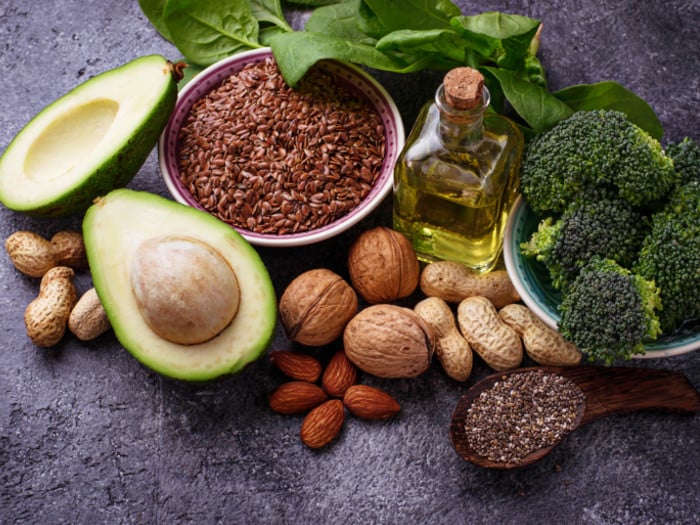Eating omega-6 foods usually isn’t a problem for most people, but if you need to boost your omega-6 levels, there are plenty of great foods to do it with.
Omega-6 Foods
The best omega-6 essential fatty acid (linoleic acid) foods include corn puffs, sausage, butter, beef, eggs, safflower oil, sunflower seed oil, and brazil nuts, among many others. These levels are based on 100-gram servings, which is an exceedingly large amount for some of these foods, particularly the oils. On average, you should consume roughly 3,000 milligrams of this fatty acid every day. [1]
Safflower Oil
A 100-gram serving contains nearly 75 grams of linoleic acid.
Sunflower Seeds
There are 34 grams of this fatty acid (linoleic acid) in a 100-gram serving of sunflower seeds.
Butter
There are 37 grams of this polyunsaturated fat in this serving of butter.
Beef
This contains less than 300 milligrams of omega-6.
Eggs
There are 3500 milligrams of this fat in a 100-gram serving.
Sausage
More than 4000 milligrams are in a 100-gram serving.
Mayonnaise
There are over 40 grams of omega-6 in each 100-gram serving.

Omega 6 fatty acids help lower the risk of heart diseases. Photo Credit: Shutterstock
Flax/Linseed Oil
There are two grams of omega-6 per teaspoon of this oil.
Sesame Seeds
There are more than 20 grams of omega-6 in 100 grams of these seeds. [2]
Pumpkin Seeds
These seeds also have over 20 grams of this linoleic acid.
Walnut Oil
Nearly 53 grams of omega-6 are present in 100 grams of this oil.
Brazil Nuts
These nuts have over 27 grams per 100-gram serving.
Other Foods
Other foods rich in omega 6 include chocolate chip cookies, chicken, grape seed oil, evening primrose oil, borage oil, blackcurrant seed oil, canola oil, hemp oil, soybean oil, cottonseed oil, poppy seed oil, and acai berries.
What is Omega-6?
Omega-6 fatty acids (linoleic acid) are a group of roughly a dozen different polyunsaturated fats that are commonly found in vegetable products, particularly vegetable oils. However, they are found in small to moderate quantities in many other foods as well. Experts recommend consuming an even 1:1 ratio of omega-6 and omega-3 fatty acids for optimal health. [3]
Different fats within the omega-6 classification can have both pro-inflammatory and anti-inflammatory properties. When it comes to the benefits of this family of fats, they are important for the following: [4]
- Promote brain development
- Improve nervous system health
- Soothe symptoms of rheumatoid arthritis
- Support bone health
- Manage cardiovascular health
